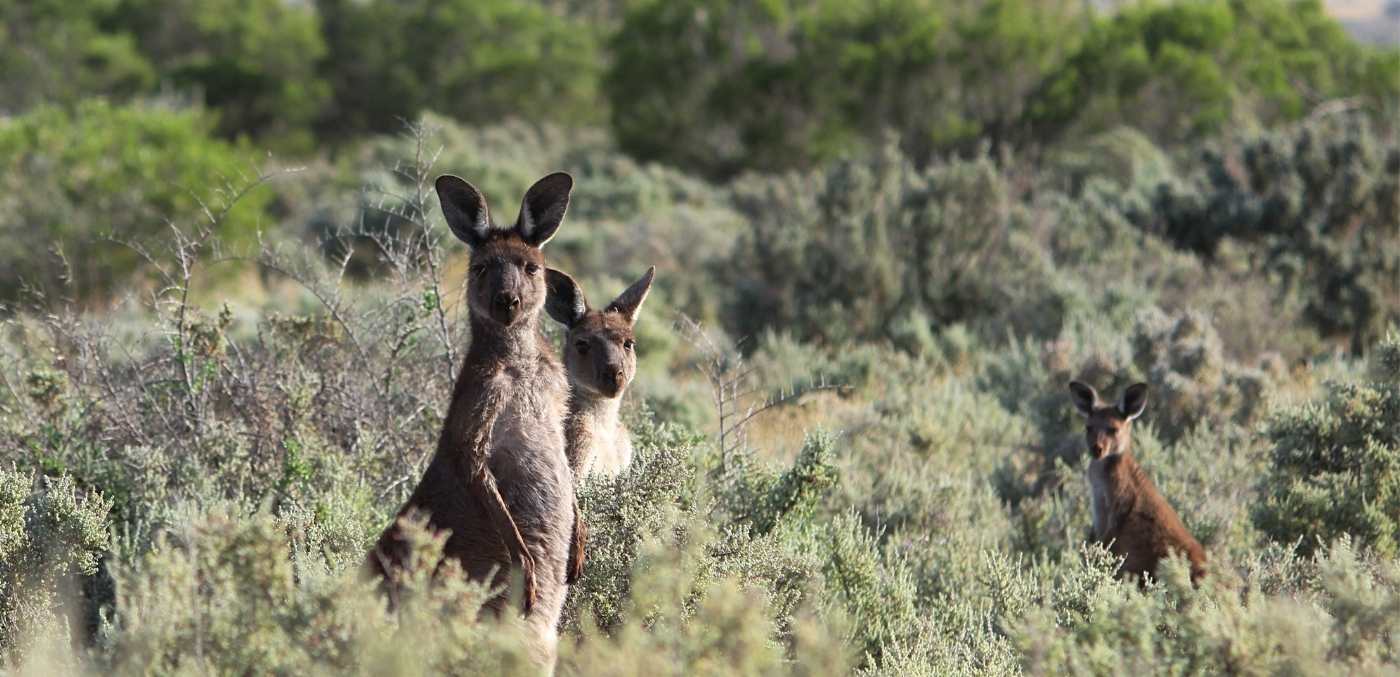There’s nothing quite as rewarding as a holiday with a purpose. Knowing that your next Australian wildlife adventure could help support animals and communities in need is all the inspiration you need to book that next Aussie trip. Added bonus – these four are all easily accessible from Melbourne.
Space, unbridled nature, clean air, a new perspective. These are today’s travel luxuries. All the more enticing if your sojourn is helping protect the planet. And you need only look as far as Australian Wildlife Journeys to find an adventure that is.
This collective of 13 ethically-minded, sustainably-focused tourism operators is diverse in the destinations it visits and the experiences it offers. But there’s a common goal: showing the world just how special Australia’s wildlife really is, and ensuring that future generations get to see it.
From Mungo National Park to East Gippsland and the Grampians, here are four Australian Wildlife Journeys’ trips within easy reach of Melbourne you should have on your agenda.
East Gippsland Wildlife Journey
4 days / 3 nights
The East Gippsland region of southeast Australia is home to some of the most biodiverse forest on the planet, as you’ll fast discover when exploring with Echidna Walkabout Nature Tours. The organisation’s private and small-group ‘Wildlife Journey’ experiences through this extraordinary part of Victoria reveal just how wild and wonderful it is. Discover its RAMSAR-listed wetlands of the Lakes District, to the dry and wet mountain forests of the Snowy River. Not to mention estuaries and surf coast.
In the company of experienced wildlife guides – they know all the best places to spot echidnas, wallabies and black swans – you’ll walk through ancient rainforest. All the while on the lookout for lyrebirds, sea eagles, enormous goannas, dragonflies and butterflies landing on delicate orchids.
Yes, the scenery is dreamy, but the real attraction of being in this part of the state is doing your part to conserve it. That might be removing fishing nets from beaches to prevent marine entanglements of fish, birds and sea mammals. Or perhaps conducting bushfire-recovery surveys, to monitor the impact on wildlife populations post the devastating 2019/2020 fires.
The new koala research project also asks you to raise your lens and snap photos of these adorable marsupials in their treetop habitat. Another way of monitoring the population of native species, along with wallabies, kangaroos, wombats and lace monitors.
“We log sightings on every tour and can share those details with guests who are interested, of course. The findings and recordings can influence policy and strategy when it comes to conservation work,” says Janine Duffy, co-founder of the Echidna Walkabout Nature Tours.

Australian wildlife: Private Mungo Outback Journey
4 days / 3 nights
Kangaroos, emus, pink cockatoos, mallee ringnecks parrots, wedge-tailed eagles, lizards basking in the sun… there’s an abundance of Australian wildlife in the Lake Mungo region of New South Wales, near Mungo National Park. But not as many as there should be.
The park – which spans 111,000 hectares – is also famous for its diverse bird life. “Many serious birdwatchers come here to see the 150 or so species of birds we have here,” says Roger Smith, co-founder of Echidna Walkabout Nature Tours.
“The pink cockatoo, chestnut-crowned babbler and a staggering diversity of parrots are all highlights.”
Emus are one of the more popular birds to spot. However in April 2021, Roger saw only eight over three days. “A few years ago, at the same time of the year, I’d usually see hundreds,” he says.
“One of the most important things we do when we assess the impacts of climate change is to monitor the health of the environment, and one of the best ways to do this is to track and record the number of creatures we see.”
This part of the state is also known for its dramatic moonscapes, all red plains and dunes carved by the riverine ecosystems of the Murray and Darling rivers.
Echidna Walkabout’s private ‘Mungo Outback Journey’ explores the magnificent Lake Mungo in the Willandra Lakes World Heritage Area. It’s humbling to be here: the region shows evidence of the oldest human remains ever discovered on the planet.
Your presence here will help Echidna Walkabout’s citizen science conservation efforts by recording species of birds, reptiles, mammals and other wildlife encountered.

Koala Recovery Experience: Australian wildlife at its finest
2 to 3 days
The natural habitat of koalas has been devastated in recent years with floods and fires. To ensure they have a future, many trees need to be planted. Echidna Walkabout has launched a special ‘Koala Recovery Experience’ in East Gippsland. And you can be involved.
Sign up, grab a shovel and help plant trees on farms on the Western Plains. There’s a lot of work to be done, as the goal is to plant 300, 000 by 2030.
“The most important factor affecting koalas is their loss of habitat due to climate change,” says Janine Duffy, director of Echidna Walkabout Nature Tours and President of the Koala Clancy Foundation. “They need it back along the riverbanks and estuary lines, because the moisture content of the leaves they eat is really important for them.”
Your days are spent in the company of affable landowners, local community members and Koala Clancy Foundation volunteers and staff. And when the hard yards are over, you’ll have time to enjoy nature walks to visit the koalas.

From Coast to Outback
7 to 13 days
From the legendary Great Ocean Road to the Grampians Mountains, this is a journey of dramatically different ecosystems. Think oceans, mountains and deserts as you travel into outback north-western Victoria and south-western New South Wales.
With Echidna Walkabout’s ‘Coast, Mountain, Outback’ tour you’ll monitor wildlife and the impacts of climate change on flora and fauna, taking note of the wild ocean cliffs and rainforest hinterland of the Great Otway National Park; the saw tooth peaks of the Grampians National Park; and the desert parks of Hattah-Kulkyne, Wyperfeld and Mungo National Parks.
Make no mistake – this journey is a remarkable exposé of the sheer diversity of southern Australia’s wildlife. Variety is the essence of this trip.
You’ll paddle with platypus in the rainforest, walk with koalas in the eucalyptus forests, see cockatoos, parrots and reptiles and climb high into sand dunes in the deserts.


